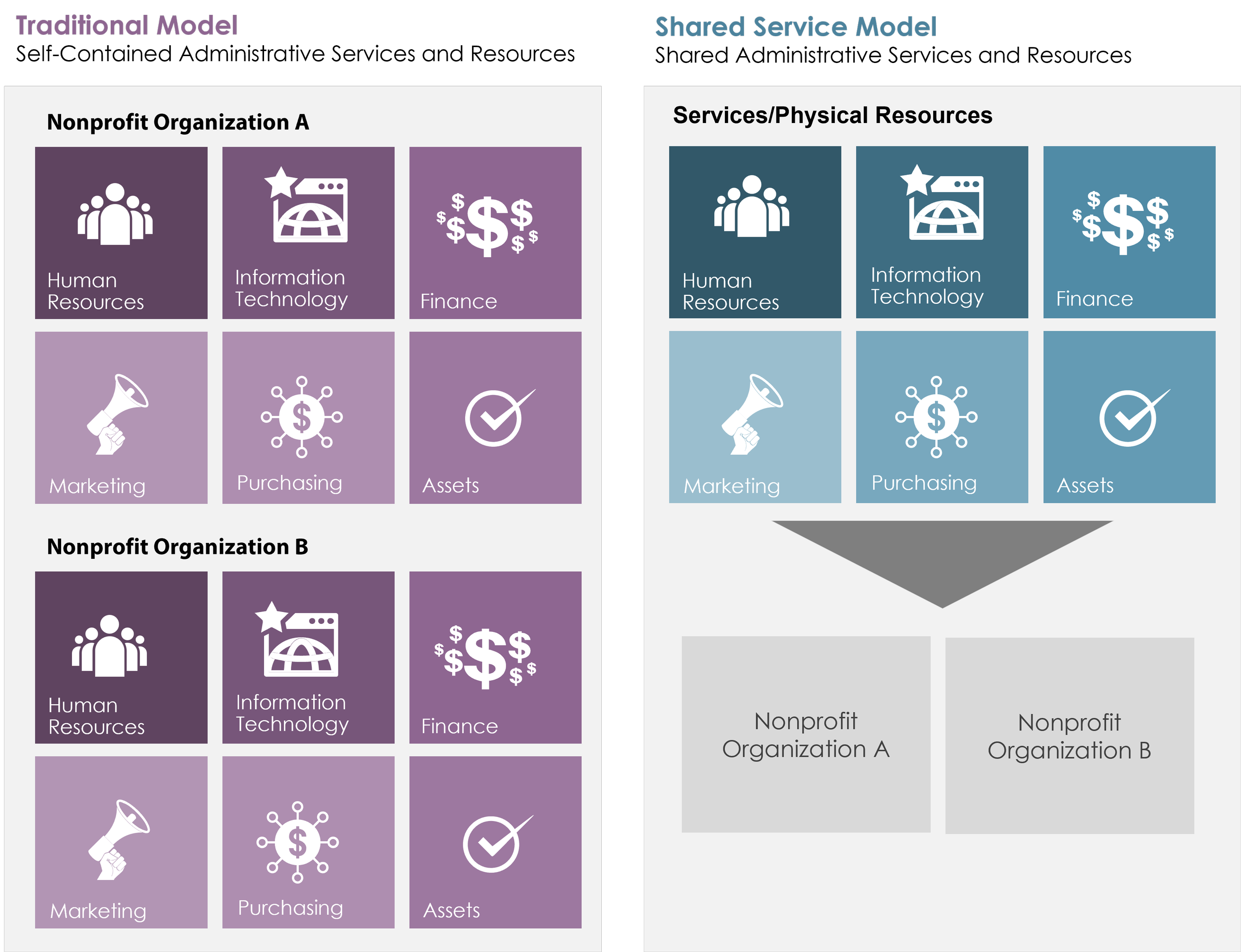Shared Services 101
Nonprofit professionals are no stranger to wearing multiple hats or trying to figure out how to do more with less. Doing a lot with a little, like limited budgets, is part of our charm. But with limited budgets and the current inflation landscape, it is difficult for some nonprofits to simply get by.
Throughout the country, nonprofits have banned together to allow their money and resources to stretch. Organizations have started recruiting third-party companies, contractors to help, or intermediary nonprofits like Nonprofit Support Network to help. This practice is known as shared services.
What are shared services?
Shared services are developed when multiple nonprofit organizations come together to utilize the time and expertise of contractors or employees focused on mainly back-office functions. Shared services are a collaborative use of resources across organizations. This allows for many nonprofits to make better use of equipment, space, staff, and more.
How do shared services work?
Shared services can replace functional departments like IT, finance, HR, and marketing that larger nonprofits and for-profit companies have. Many nonprofits share resources that aren’t unique to their organization’s mission. These resources include transportation, print services, IT software, volunteer management, and member management.
Shared services go beyond specific operational functions as it is now common for nonprofits to share physical space. An example of this is currently in play in Muncie. Right now, we’re sharing office space with Muncie Muncie BY5.
Benefits of shared services
There are plenty of advantages to sharing services with other nonprofits. One of the main benefits however is cost savings and purchasing power. Combining forces with others lowers prices which causes savings when “buying in bulk.”
It has been proved that shared services add a level of efficiency for nonprofit organizations as processes become more standardized. When collaborating with other companies, it is important that all procedures are conducted seamlessly.
Another not-so-obvious benefit of shared services is that institutional knowledge is long-lasting. This is a level of backup and security to ensure that knowledge doesn’t leave the organization once a key player leaves.
To put it simply, shared services offer a long-term solution for multiple organizations by collaborating with important resources. This concept allows nonprofit organizations to gain access to specialists and technologies that may have been unattainable before.




